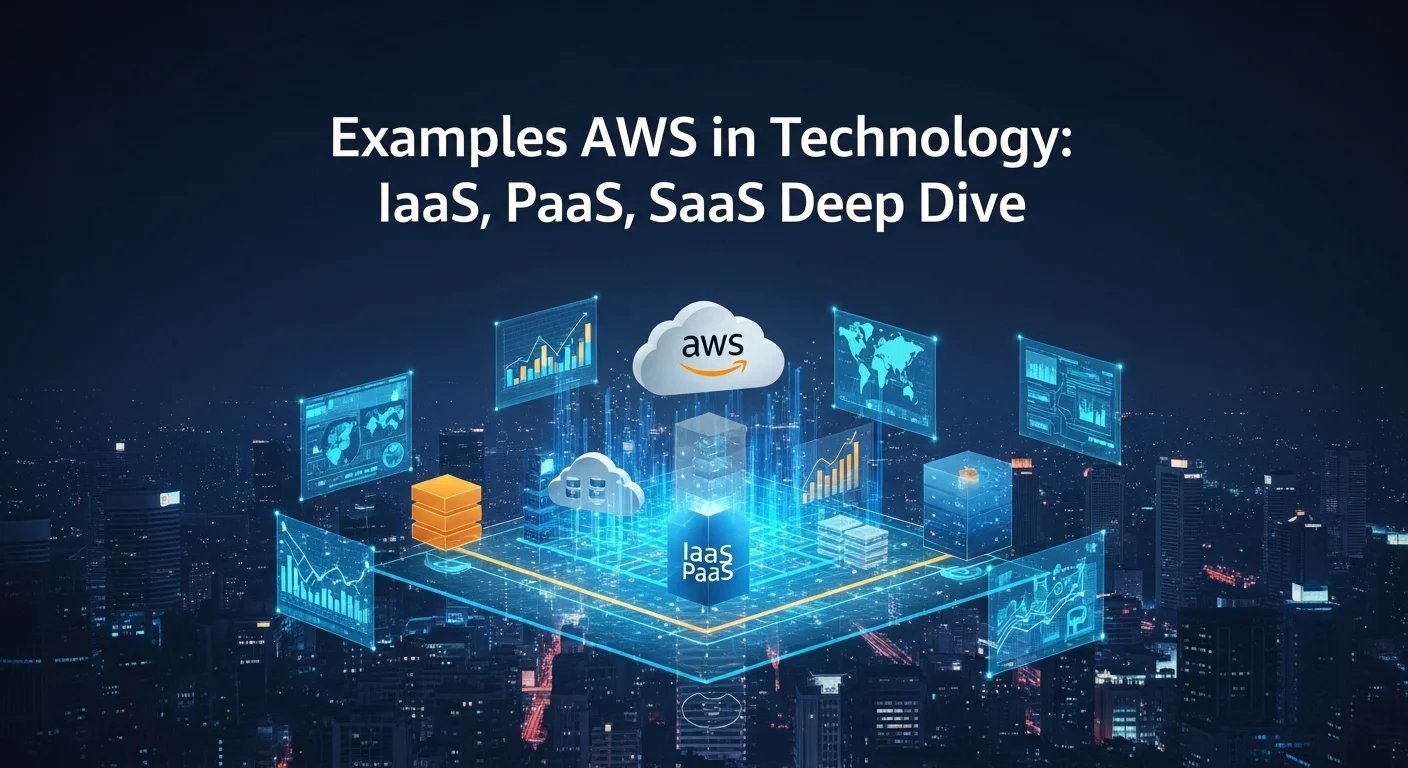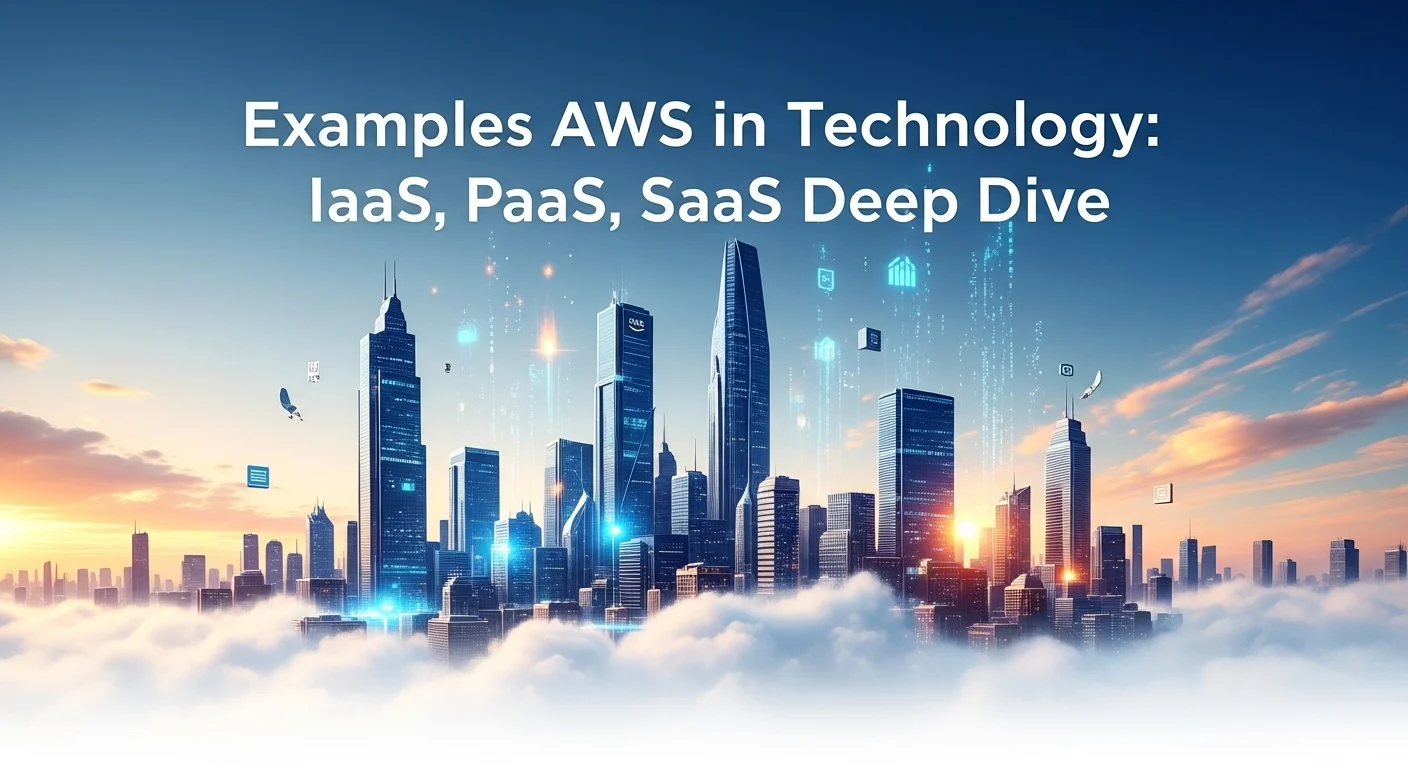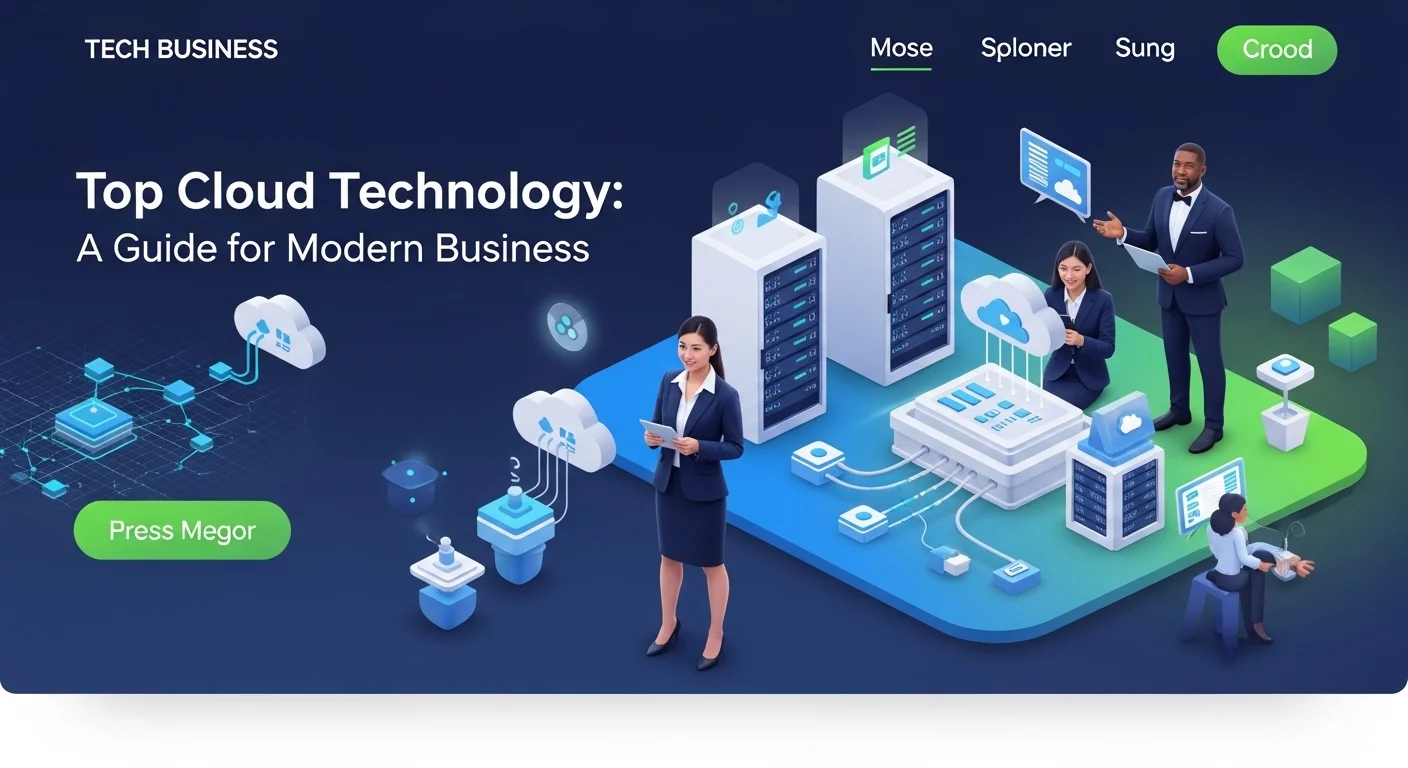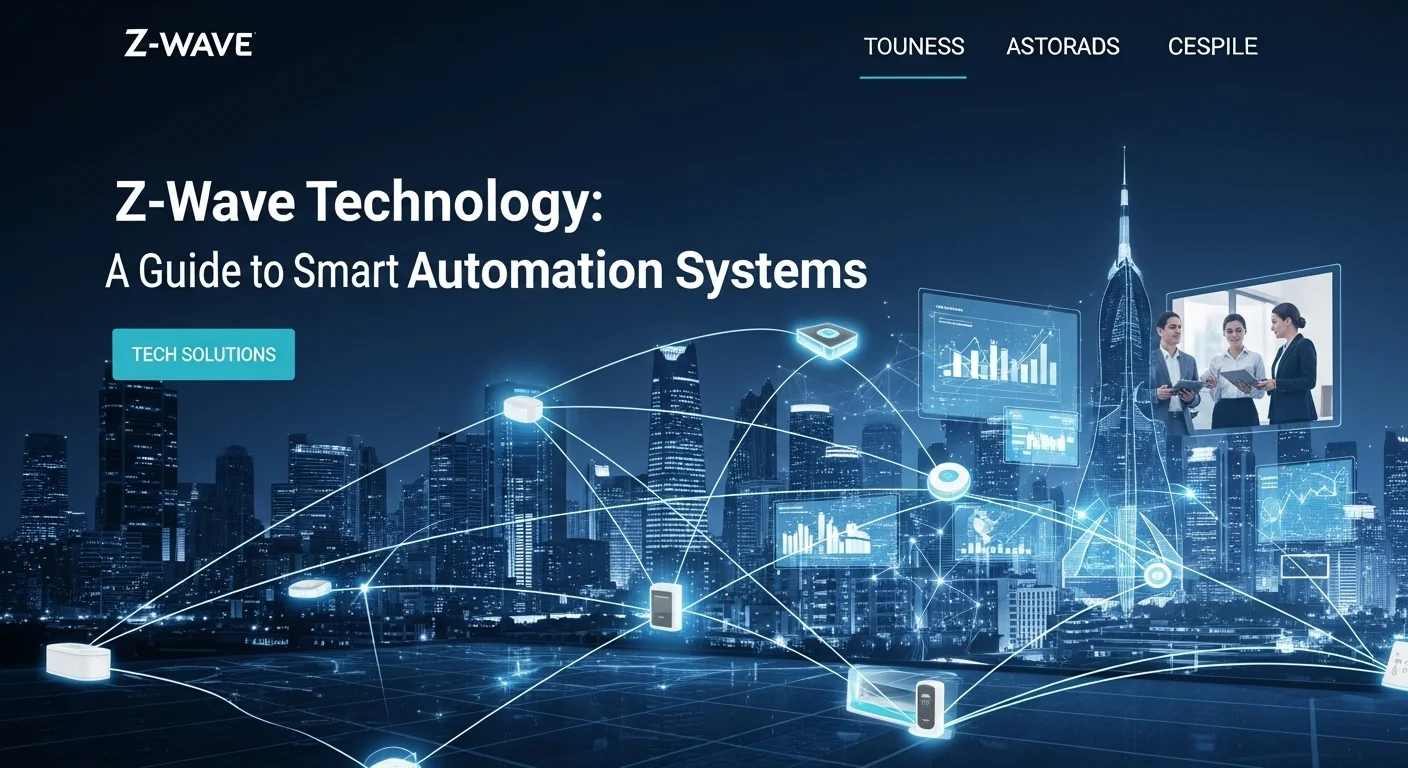AWS Demystified: A Practical Guide to IaaS, PaaS, and SaaS with Real Examples

Executive Summary
Amazon Web Services (AWS) is the engine behind so much of the modern internet, but let's be honest—diving into its huge catalog of services can feel overwhelming. I remember when I first started my journey as a cloud architect, the alphabet soup of IaaS, PaaS, and SaaS was confusing. This guide is what I wish I had back then. We're going to cut through the complexity and talk about these cloud models in plain English. I'll share practical, real-world examples of how businesses use AWS services to grow and innovate. My goal is to give you a clear map so you can understand how to use AWS for more power, new ideas, and better efficiency, whether you're a developer, a manager, or just curious about the cloud.
Table of Contents
Table of Contents
- What are IaaS, PaaS, and SaaS in AWS?
- Real-World Business Solutions with AWS
- Expert Tips for Mastering Your AWS Strategy
What are IaaS, PaaS, and SaaS in AWS?
When we talk about the cloud, we're really talking about different ways of using someone else's computers. AWS has become a giant because it offers these services in flexible ways. To really get it, you need to understand the three main 'flavors' of cloud services: Infrastructure as a Service (IaaS), Platform as a Service (PaaS), and Software as a Service (SaaS). Think of it like making a pizza. Each model gives you a different starting point. Understanding which one to choose is key to building anything in the cloud, from a simple blog to a global application that serves millions.
First up is Infrastructure as a Service (IaaS). This is like getting the raw ingredients for your pizza: the dough, the sauce, the cheese. AWS gives you the fundamental building blocks—servers, storage, and networking. You have the most control but also the most responsibility. You manage the operating system, the software, and your application. A classic IaaS example from AWS is Amazon EC2 (Elastic Compute Cloud). These are basically virtual computers you can rent. You can pick the size, power, and location in minutes. It's perfect for when you need total control. Another key piece is Amazon S3 (Simple Storage Service), which is like a massive, infinitely scalable hard drive in the cloud for storing anything from website images to huge datasets. To connect it all securely, you use Amazon VPC (Virtual Private Cloud), which lets you create your own private network in the cloud. IaaS is the foundation; it’s where you start when you need to build a custom solution from scratch.
Next, we move up to Platform as a Service (PaaS). Now, imagine you're given a pre-made pizza base with the sauce already on it. All you need to do is add your favorite toppings. That's PaaS. AWS manages the underlying servers, operating systems, and all the tedious maintenance for you. This frees up developers to just focus on what they do best: writing code. The best example I've seen of this in action is AWS Elastic Beanstalk. A developer can just upload their application code, and Beanstalk handles all the tricky parts of deployment, like balancing traffic and scaling up when more users arrive. Another lifesaver is Amazon RDS (Relational Database Service). Instead of spending days setting up and maintaining a database on an EC2 server (the IaaS way), RDS gives you a fully managed database with just a few clicks. It handles backups, updates, and scaling for you. And then there's AWS Lambda, which takes it even further. It lets you run code without thinking about servers at all. PaaS is all about speed and convenience, helping teams innovate faster by removing the operational headaches.
Finally, we have Software as a Service (SaaS). This is the simplest model: you just order a fully cooked pizza delivered to your door. You don't worry about the ingredients, the oven, or the cooking. You just enjoy the final product. A SaaS application is a complete software solution that you use, typically through your web browser, on a subscription basis. AWS itself offers some SaaS products, like Amazon WorkSpaces for virtual desktops. However, its biggest role in the SaaS world is being the platform that thousands of other companies build upon. Think about services you use every day like Netflix, Slack, or Canva—many of them run on AWS infrastructure. They leverage AWS's power to deliver a smooth experience to you, the end user. The AWS Marketplace is also a huge hub where businesses can find and subscribe to third-party SaaS tools. Understanding this full spectrum, from the do-it-yourself nature of IaaS to the ready-to-use simplicity of SaaS, is the first step to truly harnessing the power of AWS.

Real-World Business Solutions with AWS
Knowing the definitions of IaaS, PaaS, and SaaS is one thing, but seeing how they solve actual business problems is where it all clicks. The choice between these models isn't just a technical one; it's a strategic business decision that affects your budget, speed, and level of control. Let’s walk through some real-world scenarios to see how different types of companies leverage the right AWS model for their needs, turning technology into a real competitive advantage.
Let's start with a company that needs maximum control, like a bank running a custom financial modeling application. Due to strict security and compliance rules, they can't use a shared platform. This is a perfect job for IaaS. Using Amazon EC2, they can provision dedicated servers, giving them the physical isolation needed to meet regulations. They have complete freedom to configure the operating system and install specific security software. For data storage, they might use Amazon S3 for archiving transaction records cheaply and securely, taking advantage of different storage tiers like S3 Glacier for long-term retention. For the high-speed data their application needs right now, they'd attach Amazon EBS (Elastic Block Store) volumes to their EC2 instances. The whole setup is locked down within an Amazon VPC, using firewalls and network rules to control every single connection. In my experience, this IaaS approach is the go-to for industries with heavy regulations or complex, legacy applications that can't be easily modernized. It's all about control.
Now, picture a new tech startup building a mobile app. Their number one priority is launching quickly and iterating based on user feedback. They don't have a big IT team to manage servers. For them, PaaS is a game-changer. By using AWS Elastic Beanstalk, their developers can simply push their code, and AWS takes care of the rest—setting up servers, load balancers, and auto-scaling to handle viral growth. Instead of manually configuring a database (the IaaS way), they use Amazon RDS to get a production-ready database running in minutes, with automated backups and updates. This frees them up to focus on building cool features. Maybe their app has a feature where users upload a photo. They can use AWS Lambda to automatically trigger a function that resizes that photo for different screen sizes the moment it's uploaded to S3. This PaaS-first strategy allows the startup to be nimble and channel all its energy into creating a great product, not managing infrastructure.
Finally, every modern business, from a local bakery to a multinational corporation, uses SaaS. The marketing team uses a CRM like HubSpot (which is built on AWS). The finance team uses accounting software like Xero. The entire company collaborates on Slack or Google Workspace. Here, the business isn't building anything; it's 'renting' a finished solution. The key decision is which software best fits their needs and budget. AWS plays a vital role behind the scenes, providing the reliable and scalable foundation that allows these SaaS companies to operate. When a SaaS app works flawlessly during a huge traffic spike, you can often thank the scalability of AWS. Furthermore, the AWS Marketplace simplifies things for businesses by acting like an app store for enterprise software. You can find, buy, and deploy thousands of SaaS solutions, often with the billing consolidated into your main AWS bill. A smart cloud strategy often involves a mix of all three models: using SaaS for standard business functions, PaaS for new application development, and IaaS for specialized workloads that require deep control.

Expert Tips for Mastering Your AWS Strategy
Just using AWS isn't enough to guarantee success. To truly get the most out of it, you need to be strategic. Over the years, I've seen companies save millions and innovate faster by following a few key principles. It's about moving from just 'using the cloud' to 'excelling in the cloud.' Whether you're working deep in the IaaS trenches or simply consuming a SaaS application, these tips will help you improve performance, tighten security, and manage costs effectively.
My number one piece of advice is to get familiar with the AWS Well-Architected Framework. Seriously, it's like a free consultation from AWS's top architects. It's built on six pillars: Operational Excellence, Security, Reliability, Performance Efficiency, Cost Optimization, and Sustainability. Let's apply this. If you're managing IaaS services like EC2, the 'Security' pillar means going beyond just a password. It's about using IAM (Identity and Access Management) to give users only the permissions they absolutely need, setting up strict firewall rules, and encrypting all your data. For 'Cost Optimization', it's about not overpaying. Use tools like AWS Compute Optimizer to make sure your EC2 instances aren't too big for the job, and look into Savings Plans or Reserved Instances for your steady workloads to get big discounts over on-demand pricing. This isn't just about saving money; it's about running a tight ship.
When you're building on PaaS, your focus shifts. AWS handles the hardware, but you're still responsible for your app's code and data. For a service like AWS Elastic Beanstalk, 'Operational Excellence' means automating your deployments. Set up a CI/CD pipeline so you can release updates safely and frequently, maybe using a blue/green deployment strategy to avoid any downtime. For 'Performance Efficiency' with a database like Amazon RDS, it's about more than just picking a size. It involves monitoring your database's health with Amazon CloudWatch and using features like Read Replicas to handle heavy traffic without slowing down your main database. These PaaS strategies help you build better, more resilient applications without getting bogged down in server management.
Even when you're just a customer of a SaaS product, you still have responsibilities. The 'Security' pillar is crucial. You need to do your homework on the SaaS provider. How do they handle your data? Are they compliant with industry standards? You should also manage user access carefully, ideally by connecting the SaaS app to a central identity provider to enforce strong password policies and two-factor authentication. From a 'Cost Optimization' standpoint, it's easy to waste money. Regularly audit your licenses to make sure you're not paying for accounts that nobody is using. A great cloud strategy recognizes that these models often work together. You might build a product that uses AWS Lambda (PaaS) for its logic, stores data in RDS (PaaS), and hosts large files in S3 (IaaS). Mastering how to secure and optimize each piece of that puzzle is the key to building something truly great. To go deeper, I always recommend diving into the official AWS Well-Architected Framework documentation. Combining this knowledge with a hands-on understanding of AWS services will transform your cloud journey, making your solutions more secure, resilient, and efficient.
Expert Reviews & Testimonials
Sarah Johnson, Business Owner ⭐⭐⭐
This was a good overview, but as a small business owner, I was hoping for more specific examples for companies just starting out. A solid introduction, though.
Mike Chen, IT Consultant ⭐⭐⭐⭐
As an IT consultant, I found this guide really helpful for clarifying the differences between the service models. It's a great resource to share with clients who are new to the cloud.
Emma Davis, Tech Expert ⭐⭐⭐⭐⭐
Absolutely fantastic article! This is one of the clearest explanations of AWS IaaS, PaaS, and SaaS I've read. It perfectly breaks down complex topics. Highly recommended!



